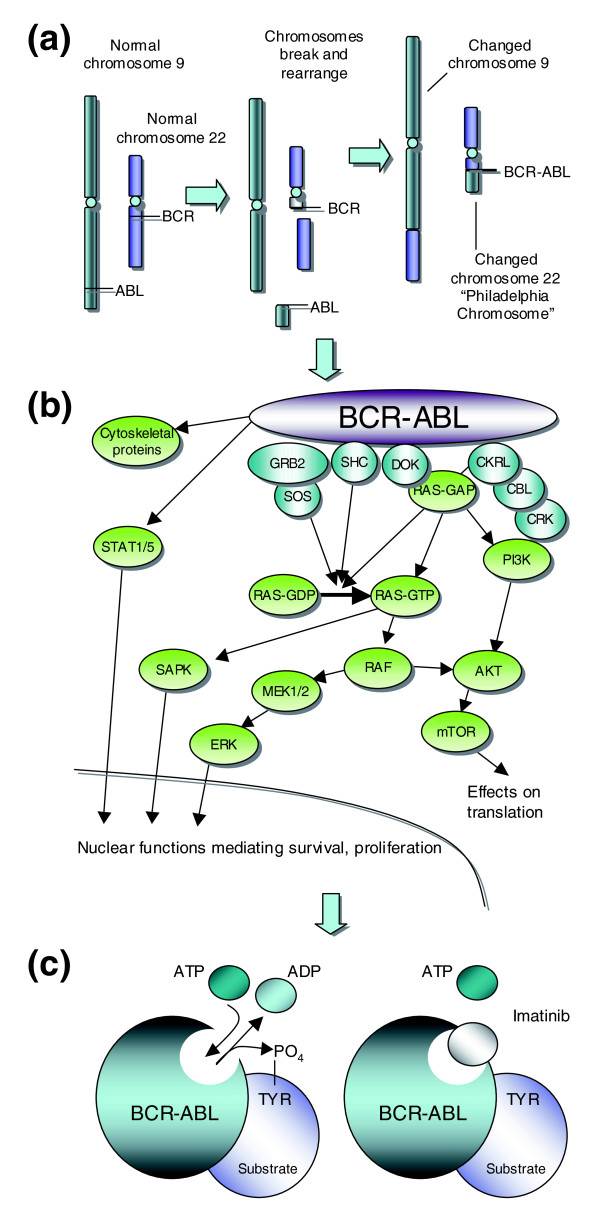Figure 1.
Targeted therapy for chronic myelogenous leukemia (CML). (a) One of the more common molecular changes in hematopoietic cells from CML patients is a reciprocal translocation (swap) of DNA between the long arms of chromosomes 9 and 22. This translocation forms the 'fusion' gene BCR-ABL, which encodes a constitutively active ABL kinase. (b) The constitutive activity of BCR-ABL in hematopoietic CML cells drives several candidate oncogenic signaling pathways. Hematopoietic cells in CML patients are 'addicted' to BCR-ABL signaling such that BCR-ABL inhibition impairs their viability. (c) Tyrosine kinases such as ABL and BCR-ABL have well defined catalytic domains that bind ATP and use its phosphate moiety to post-translationally modify substrate proteins. Drugs such as imatinib bind and block the catalytic domain and in doing so limit hematopoietic cell proliferation in CML patients. (b) and (c) modified from [75] and [76].

